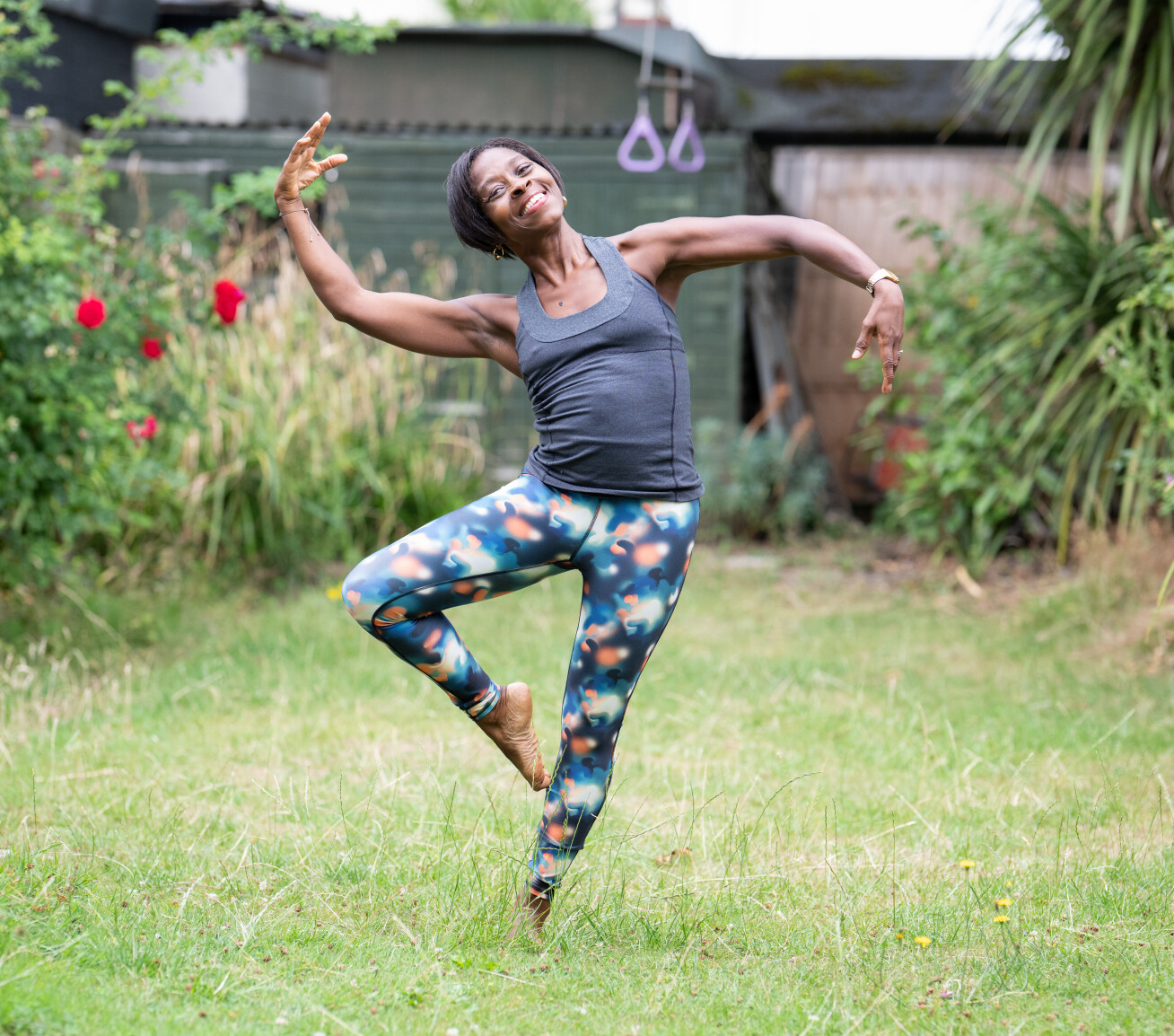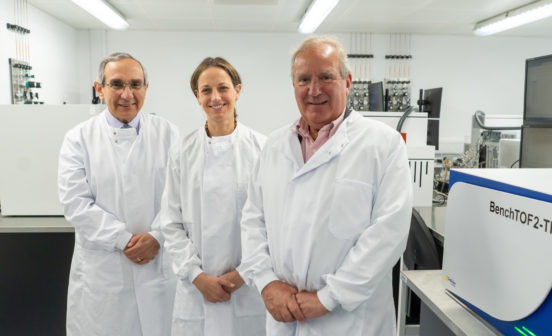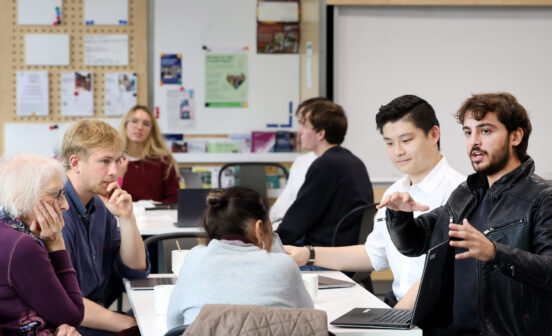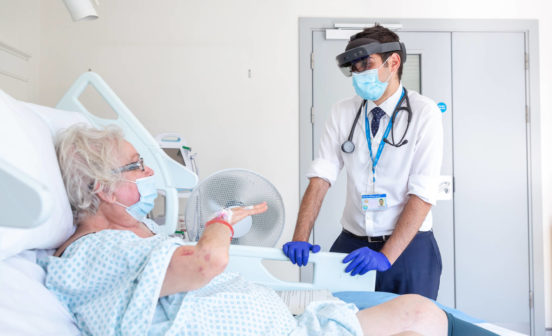Treatment CE Mark Awarded to Innovative Implant Enabling Hip Resurfacing for Women

A new style of hip implant that enables women to have a type of hip surgery previously only suitable for men has been awarded a CE mark- the product meets EU safety.
A new style of hip implant that enables women to have a type of hip surgery previously only suitable for men, and can lead to better outcomes for younger and more active patients, has been awarded a CE mark.
Hip resurfacing is a surgery to repair damage inside the hip joint. It is typically carried out on younger patients rather than total hip replacement and involves the surgeon removing the diseased cartilage of the hip joint and resurfacing the joint. This approach is less invasive than total hip replacement and leaves the patient with greater mobility after surgery.
However, until now, women have been unable to have hip resurfacing surgery. This is because it used metal implants that were not optimised for women’s hip shapes and which released particles that caused tissue reactions, leading to high failure rates.
The treatment is also not available for men who have smaller femoral heads. The femoral head is the highest part of the thigh bone and where this measures less than 50 millimetres across, hip resurfacing has not been offered, due to increased risk of complications.
Improving the picture for women
The new H1 implant was designed to address these issues by using ceramic rather than metal to coat the two faces of the hip joint. Ceramic is a more wear-resistant material and does not interfere with tissues in the body. It can also be shaped to fit the natural contours of the joint. This means that it is suitable for women as well as men.
The implant was developed by researchers at Imperial College London’s spinout Embody Orthopaedic.
Every year around 100,000 people undergo primary hip replacements in the UK, with 59 per cent of patients being women. Professor Justin Cobb, Chair in Orthopaedic Surgery in the Department of Surgery and Cancer at Imperial College London, Head of Elective Surgery at Imperial College Healthcare NHS Trust and Co-Founder of Embody Orthopaedic, and a key member for the NIHR Imperial BRC Biomedical Engineering Theme, said: “It is great to see the H1 device being granted the CE Mark and it’s a recognition of its quality and impact.
“We are really pleased that our new implant enables women and smaller men to benefit from hip resurfacing. Resurfacing has always been an effective option for active and younger patients who don’t need a total hip replacement, but for 10 years, its use has been restricted to large men.
“Alongside improving the picture for women, the new implant also reduces the risk of side effects. Current resurfacing devices are metal-on-metal and particles can be released into the body that can cause unpleasant side effects and in some cases, patients require further surgery.”
Return to physical activities
Professor Cobb added: “By keeping the flexibility and strength of living bone in the hip, H1 enables patients to return to fitness, helping to sustain health and wellbeing – a priority for the government today.”
Clinical trials of the new implant in over 100 patients at Charing Cross Hospital, part of Imperial College Healthcare NHS Trust, the researchers found that patients could return to physical activities such as swimming and cycling within six weeks, like all modern hip replacements, after their operation.
First in the world
The H1 implant can now be sold to clinics throughout Europe and in other countries that recognise the CE mark, such as the United Kingdom.
It is the first hip resurfacing device to receive the CE mark under the European Union’s new Medical Device Regulation (MDR) guidelines and is the first non-metal resurfacing implant to receive regulatory approval anywhere in the world.
Dr Susannah Clarke, Co-Founder and CEO of Embody Orthopaedic, said: “The CE mark represents a significant step in making the device more widely available to patients. The development of the H1 implant shows what can be achieved when engineers, scientists, clinicians and industry work together on a shared goal. It’s a wonderful and concrete example of bench-to-bedside translational research coming from the Sir Michael Uren Hub.
“In the MSK lab at Imperial, we have been looking at patients five years after surgery – their performance is even better than it was at one-year post-op. By simply resurfacing their hips instead of replacing them, patients appear to be returning to higher levels of activity which are good for their general health and well-being.”
Between September 2017 and March 2022, 250 hip resurfacings were undertaken using the H1 device in both men and women at Charing Cross Hospital. With over 100 patients now more than five years post-surgery, H1 appears to function like other well-designed hip resurfacing devices.
The device is now being prepared for a European market launch. Zimmer Biomet, a leading global medical technology company, holds an exclusive development and licensing agreement with Embody Orthopaedic for the device.
Carol’s story
Carol Burke, 62, is an ex-dancer and was fitted with the H1 implant in 2020 at Charing Cross Hospital.
“As a dancer, you are used to injuries and a certain level of pain. But I noticed that I was having a lot of pain in my left hip. I was going to an osteopath for the longest time, doing all I could around the injury to keep myself mobile and free of pain.
“My osteopath said to me that it would be a good idea to see a doctor and not leave the injury until it’s beyond repair. At that point, I was limping as that was the only way I could walk to alleviate the pain. I struggled with getting in and out of a car, getting up after sitting down and I had to stop attending dance classes.
“A friend of mine told me about Professor Cobb and his hip resurfacing trial. I qualified for the trial, and I had my operation on 22 December 2020. The experience was great, and I was mobile very quickly – walking with crutches – and was discharged by Christmas Eve.
“I noticed the pain in my left hip went away and within a month of surgery, I no longer needed to walk with the crutches, then walking stick that surgery had necessitated. Four years after the procedure, my left hip is pain free, I cycle, swim, choreograph and can do a certain level of dance.”
Rachel’s story
Rachel Cresswell, 38, was fitted with the H1 implant in November 2017 at Charing Cross Hospital.
“I like exercise and it is a huge part of my life. I was training for Tough Mudder in 2014 – a 15k obstacle course – when I first noticed pain in my left hip. I went on a run and I felt like I tweaked something. I had physiotherapy but it didn’t make any difference. I had further tests and I was told I needed a total hip replacement but they didn’t want to do it to me at the time because of my age and so I was referred to physiotherapy again.
“At this point the pain was very bad. I had to ask people to tie my shoelaces for me because I couldn’t reach down to do it, I would lie in bed at night and I couldn’t sleep very well because my hip would be throbbing. My physiotherapist had been to a talk by Professor Cobb on his H1 implant and he thought, as a young and active woman, I may be a suitable candidate for his trial.
“I met with Professor Cobb and his team and after further investigations, I was accepted onto the trial. I had my operation at the end of November and after four weeks, I started to feel like myself again. I was able to walk without any pain and by the end of January 2018, I had rejoined the gym and started exercising again.
“The surgery has made a big difference to my life. I have greater flexibility, I can sleep perfectly on my back and side and, most importantly, I’ve been able to get back to the stuff that I love – like cycling, swimming and hiking.”
Deane’s story
Deane Cooper, 52, was fitted with the H1 implant in November 2017 at Charing Cross Hospital.
“I first noticed pain in my thigh in 2015 and it was tremendous. I went to the doctors, and I was told I had damaged a femoral nerve – the largest nerve in the leg. I was given tablets to treat it, but the pain just got worse and worse to the point that alcohol would be the only thing to take the edge off it. I started drinking quite a bit.
“I couldn’t play any sports such as squash or football – things I enjoyed doing – because of the pain. Even doing everyday activities, such as walking the dog was difficult. I ended up seeing a sports therapist who, after some tests said the issues I was having was due to my hip and I had no cartilage left – my joints were bone on bone.
“I saw a doctor at a private hospital who recommended hip resurfacing as a treatment. Not many doctors do it, but he had studied under Professor Justin Cobb and said he would recommend me for his clinical trial. I went to Charing Cross Hospital for further tests and was accepted onto the trial.
“Within two months, I was having the operation at Charing Cross Hospital to be fitted with the implant. I was discharged two days after the operation, and I started to notice improvements. Within a few days, I was able to drive my car and a month later I held a New Year’s Eve party, and I was moving around and entertaining. I was able to walk the dog with no pain.
“It’s been seven years since I’ve had the operation and I now play squash with my wife, football every Sunday for a team and I box at least once a week, which involves a lot of skipping, twisting and pivoting your body. I no longer think about my hip and notice my implant.”
Lee’s story
Lee Walker, 47, works for the NHS and had both his hips resurfaced with the H1 implant in 2018 and in 2021 at Charing Cross Hospital.
“I was experiencing a huge amount of pain and difficulty walking on the right-hand side of my body and I had trouble with cycling where I could feel significant heat coming from my joint – it was extremely painful. The point where I realised that I needed to get help was when I became unable to walk around the corner to the local Co-Op. On the way to the shop there is a slight incline and on the way back, I was having to stop and sit on a wall and just let the pain subside long enough before I could continue.
“I’d been a very active person, cycling to work, doing audax rides at weekends and other general activities but that all stopped in 2018. I was initially told by doctors that I needed a total hip replacement, and that was the only option available for me, and then I was told about the risks of this such as dislocation and reduced range of mobility.
“I thought that sounded terrible. I was doing a lot of scuba diving at the time and the risks might meant I’d not be able to put my fins or even put my shoes on let alone get my leg over my bicycle saddle, which was going to be a huge problem. That’s when I started to look into hip resurfacing.
“I read an article online about Professor Cobb’s hip resurfacing trial and thought this looked fabulous so I got my GP to refer me and after some further investigations, I was accepted.
“Both of my surgeries took place at Charing Cross Hospital. On both occasions, I was discharged after just two nights in the hospital. I was able to walk around, wash and dress right away, and I was able to put my socks on and tie my shoelaces within 10 days of physiotherapy – these things were difficult to do before the surgery.
“Six months after the surgeries I was able to go back to normal exercises like cycling, which was fantastic for me. Since the surgeries, I’ve been able to do Ride London twice – in 2022 and 2023 – and both times I completed the course in under six hours. I’ve also been able to scuba dive with my son and that was just lovely as I thought I never be able to dive again.”
Saddique’s story
Saddique Ahmed, 40, was fitted with his H1 implant in 2018 at Charing Cross Hospital.
“I kept getting excruciating pain in my hip area. I’d gone to my GP several times and was told that I had muscle pain. I was sent for an MRI scan, but instead of doing my hip, they did my lower back as they thought there was something wrong with it. I saw a specialist who diagnosed me with hip impingement, which occurs when the ball and socket of the hip joint don’t fit together properly.
“I’d lost cartilage and that was causing the pain because I was bone on bone. In terms of my activities, that all stopped. I’d gone from five days of activities like football and running to nothing.
“I had steroid injections that lasted for about three months and a lot of medication like pain killers, which had a lot of side effects like issues with your bowel. I was also not able to sleep properly. I saw a consultant who recommended that I have a total hip replacement, and I was due to have the procedure in March 2018.
“It really hit me what a total hip replacement meant for my life like restrictions in my mobility. I started looking at other alternatives like stem cell treatment and I came across an article on Imperial’s website about the H1 implant.
“I contacted Professor Cobb and his team, and they invited me in to be assessed for the trial. I was accepted and I came off the list for the total hip replacement surgery.
“I had my surgery in April 2018 and I was discharged very quickly. The day after I got discharged, I could take steps unaided. Within three months, I was walking and driving again, and I’d gone back to work after six months off. I started going to the gym and jogging up to two miles. The surgery and implant have been a game changer. It’s given me my confidence back and I appreciate the fact I can now get back to doing the things I love.”





